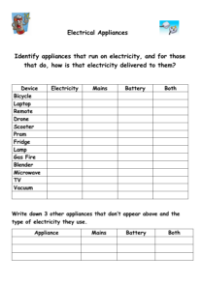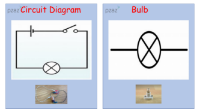Electrical Conductors - Presentation

Science Resource Description
In a presentation aimed at enhancing students' understanding of electrical conductors, the fundamental principles of electricity and circuitry are explored. The session begins with key objectives, prompting students to classify objects as metal or non-metal, construct a simple circuit, define electrical conductors and insulators, and identify materials that are exceptions in electrical conduction. A visitor, Mr Robot, who specializes in building robots for car manufacturing, introduces the concept of conductors—materials that allow electricity to flow through them, typically metals. He also explains the role of insulators, which are usually non-metals that prevent electrical flow, highlighting their importance in safety and in devices like alarms. Graphite, a form of carbon and a non-metal, is presented as an anomaly because it conducts electricity, much like the graphite found in pencils.
Through hands-on activities, students are encouraged to build circuits and experiment with different materials to determine whether they are conductors or insulators based on whether a light bulb shines or not. This practical approach helps to reinforce the concept that metals are generally conductors while non-metals are insulators, with the notable exception of graphite. The presentation also guides students to consider the applications of circuits in everyday devices and challenges them to use their knowledge to construct a burglar alarm, incorporating the principles of conductors and insulators. By the end of the session, students are expected to have a clearer understanding of how to differentiate between metals and non-metals, the distinction between insulators and conductors, and the practical uses of these materials in creating functional circuits.







